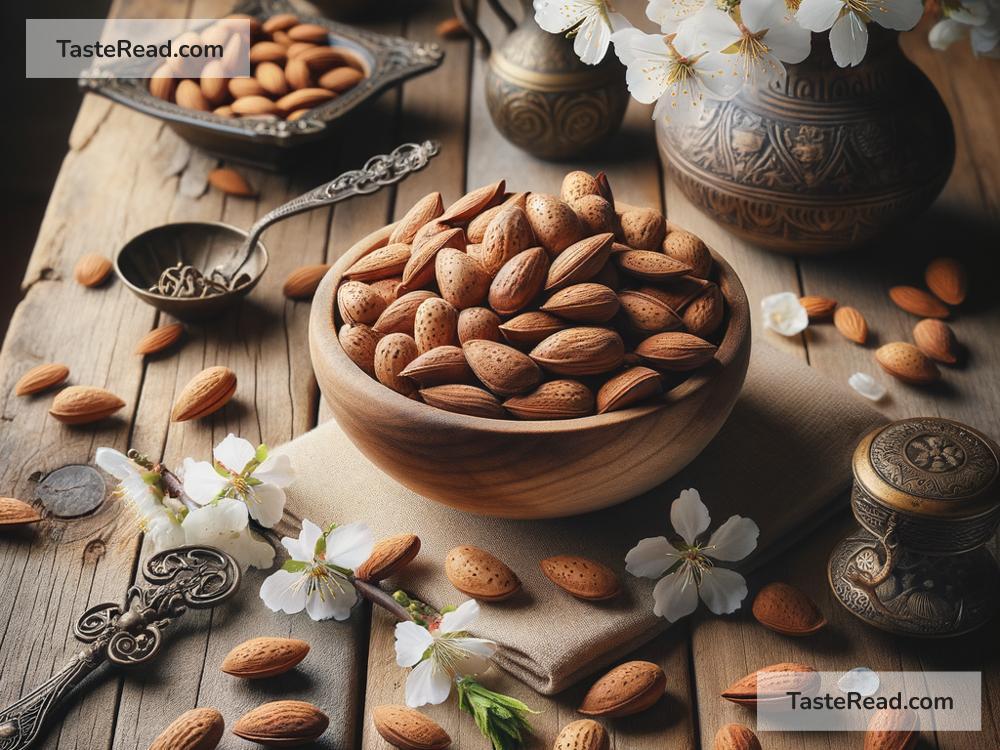How Almonds Became Symbols of Purity
The almond tree is one of the most fascinating plants in the world. It is not only loved for its delicious nuts but also admired for its beauty and special meaning. Throughout history, almonds have been seen as symbols of purity in many cultures. But how did something so small and tasty become a sign of something so meaningful? Let’s explore this journey.
Nature’s Pure Creation
When you look at an almond tree, the first thing you notice is its beauty. Almond trees bloom with delicate white and pale pink flowers in early spring, often before other trees wake up from their winter rest. The flowering of almond trees feels magical—seeing them stand tall and full of blossoms while everything else is still dull and gray gives a feeling of hope and new beginnings. This early bloom may have contributed to almonds being associated with purity, as they seem untouched by the hardships of winter and bring freshness to the surroundings.
In addition, the almond fruit itself is protected within a hard shell. This shell acts as a barrier, keeping the almond kernel safe and unspoiled. The idea of something pure and valuable being hidden inside could also be why almonds are linked to the concept of purity.
Almonds in Ancient Cultures
Almonds have been around for thousands of years, dating back to ancient times. They are mentioned in some of the oldest texts known to humans, including the Bible and other historical writings. In these texts, almonds were often used as symbols of divine favor, hope, and purity.
For example, in the Bible, almonds are included in the story of Aaron’s rod. In the Book of Numbers, Aaron’s rod miraculously sprouted almond blossoms as a sign from God that he had chosen Aaron as the high priest. This event was seen as a display of divine purity and approval. Because of this story, almonds became closely associated with spirituality and purity in religious contexts.
Similarly, in Ancient Greek and Roman cultures, almonds were valued not only for their taste but also for their symbolic meaning. They were often used in ceremonies, rituals, and celebrations, representing renewal and purity. People saw the almond tree’s ability to bloom early as a sign of its “clean” and hopeful energy.
Almonds in Art and Literature
The symbolism of almonds didn’t stop with ancient cultures—it carried over into art and literature. Over the centuries, artists and writers often used almonds as metaphors for purity, goodness, and protection. In Christian art, almond-shaped symbols (called mandorlas) often surrounded holy figures like Jesus and Mary, emphasizing their divine and pure nature. The shape of the almond was believed to represent eternity and perfection, which are closely tied to purity.
In traditional poetry and stories, almonds were occasionally compared to innocence and inner beauty. The hard shell of the almond came to represent the idea that purity and goodness often lie hidden within, waiting to be discovered and appreciated.
From Symbolic to Practical
While almonds held symbolic meanings for purity in ancient times, they also gained practical importance. People started growing and harvesting almonds for food, medicine, and beauty purposes. Almond oil became popular for use in skincare and hair care, as it made you look fresh and radiant. This connection to cleanliness and self-care strengthened almonds’ association with purity.
Moreover, the almond blossom continued to inspire people’s imaginations. It became a favorite motif in weddings and romantic traditions because its delicate beauty symbolized the pure love and commitment between two people. Even today, almond trees are sometimes planted at wedding venues or displayed in art to reflect purity and love.
Modern-Day Connection
In our modern world, almonds are still cherished for their symbolism and practical uses. When we see almond trees blooming, we feel a sense of peace and renewal. Eating almonds is often associated with healthy living, which many people view as a way to cleanse and purify the body. Almond oil products, still popular in cosmetics, are marketed as natural and pure—continuing the long-standing connection between almonds and purity.
The next time you see an almond tree or enjoy a handful of almonds, remember the deeper meaning behind them. They are not just tasty or beautiful—they carry a history of representing purity, hope, and renewal across centuries. These small nuts and delicate flowers remind us of the importance of finding beauty and goodness in life, even in challenging times.
Conclusion
Almonds have come a long way, from ancient stories to modern kitchens. Their association with purity is rooted in their natural beauty, historical significance, and symbolic representations in art and religion. Whether you appreciate their blossoms, enjoy their taste, or use their oil for self-care, almonds remind us of the possibility of purity and grace in our lives.
So next spring, when you see almond trees bursting with blossoms, let them remind you that purity isn’t just a historical idea—it is something we can all strive for each day.


